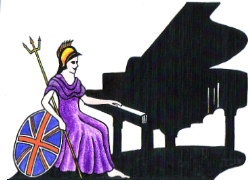Sounding Boards for Pianofortes

UK Piano Page

PROVISIONAL SPECIFICATION left by Robert Smith at the Office of the Commissioners of Patents, with his Petition, on the 20th March 1872.
"I, ROBERT SMITH, of Plymouth, in the County of Devon, Pianoforte Manufacturer, do hereby declare the nature of the said Invention for IMPROVEMENTS IN SOUNDING BOARDS FOR PIANOFORTES AND OTHER STRINGED MUSICAL INSTRUMENTS." to be as follows:
This Invention is applicable to any musical instrument in which strings vibrate in connection with a sounding board, has for its object to render the sounding board a more perfect conservator of the vis viva of the vibrating strings, so that the particles of the string and sounding board when once set in motion continue to vibrate for a much longer period than is usual with instruments of that kind. To this end I construct the sounding board of two thicknesses or laminae of wood instead of, as usual, one only, so placed that the grain of one cross the grain of the other at an angle of ninety degrees or other large angle over its entire area, by which means I ensure equal elasticity in all directions. The sounding board so constructed may or may not be strengthened by bars as is usual in the pianoforte.
The advantages gained by this Invention are,1. A considerable increase in the capability of the instrument to prolong the tone after the first disturbing cause has ceased to act.
2. A great increase in the general elasticity of the sounding board, by which means a softer as well as a louder tone can be produced, thus affording great advantages for the production of delicate and refined effects.
3rd. Greater strength to resist the downward bearing of the strings resulting in the production of a more brilliant and powerful tone.
4th. A perfect safeguard against the defect known as a broken belly to which instruments of this kind are much subject if exposed continuously to the influence of damp.